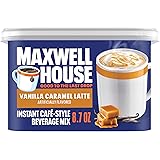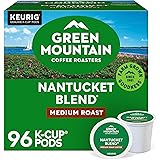Demystifying Coffee: A Beginner’s Guide to Better Home Brewing
There was a time when my morning cup of coffee was less about enjoyment and more about survival. It was a ritual, sure, but often a rushed one, involving whatever beans were cheapest and the most convenient brewing method. The idea of truly understanding coffee, from grind size to water temperature, felt like stepping into an intimidating, complex world reserved only for serious connoisseurs.
But what if it didn’t have to be that way? What if elevating your daily brew, finding new flavors, and mastering simple techniques was actually accessible to everyone? As the video above shows, with insights from Erika Vonie, Director of Coffee at Trade Coffee, stepping up your coffee game is much simpler and more enjoyable than you might think.
Erika, a true coffee master, expertly guides us through the basics, proving that anyone can transform their everyday coffee experience. This isn’t about becoming a barista overnight; it’s about making small, impactful changes to brew a more delicious and satisfying cup of coffee right in your own kitchen.
The Foundation: Understanding Your Coffee Beans and Water
Before we even think about brewing, let’s talk about the stars of the show: your coffee beans. The world of coffee is vast and exciting, with different regions, roasts, and flavor profiles. Finding your ideal coffee can seem daunting, with over 400 different coffees from 52 roasters just through a platform like Trade Coffee.
Erika demonstrates how a personalized matching quiz, or even a few pointed questions, can help narrow down the choices. When selecting your coffee, consider:
- **Brewing Method:** Do you primarily use a French Press, Chemex, AeroPress, or something else?
- **Flavor Preference:** Do you lean towards classic, traditional tastes or something more adventurous?
- **Additions:** Do you drink your coffee black, or with milk and sugar?
- **Flavor Notes:** Are you drawn to bright, fruity notes (like stone fruit or marmalade) or rich, sweet notes (like chocolate and caramel)?
As seen in the video, a preference for adventure, black coffee, and fruity notes might lead you to a darker roasted coffee with stone fruit and maple syrup characteristics. Your palate is unique, so don’t be afraid to experiment!
Beyond the beans, another often overlooked element is water. Using filtered water is a huge game-changer for your coffee. Tap water often contains minerals, chlorine, and other impurities that can drastically affect the taste of your brew, masking the delicate flavors of the coffee beans themselves. Investing in a simple water filter can make a noticeable difference in the clarity and taste of your final cup.
Mastering the Grind: The Key to Great Coffee
One of the most crucial steps in brewing exceptional coffee is grinding your beans just before brewing. Pre-ground coffee loses its freshness and flavor much faster. Once ground, coffee starts to oxidize and release its aromatic compounds, diminishing its potential. Grinding right before you brew ensures you capture maximum freshness and flavor.
But it’s not just about freshness; it’s also about consistency and grind size. Different brewing methods require different grind sizes to achieve optimal extraction. Think of it like this: the larger the surface area of the coffee grounds exposed to water, the faster extraction occurs. A finer grind means more surface area, quicker extraction, and potentially more bitterness if over-extracted. A coarser grind means less surface area, slower extraction, and a risk of under-extraction if not brewed long enough.
While the video mentions a “fancy conical burr grinder,” even a simpler burr grinder is superior to a blade grinder. Blade grinders chop the beans unevenly, creating a mix of fine dust and large chunks, leading to inconsistent extraction and a less satisfying cup. A burr grinder crushes the beans uniformly, allowing for much more control over your grind size.
- **For French Press or Cold Brew (Immersion Methods):** You want a very coarse grind, similar in texture to kosher salt. This prevents over-extraction during the longer contact time with water.
- **For Chemex (Pour Over Method):** A finer grind is needed compared to French Press, but not as fine as espresso. Think of it as a medium-coarse texture, closer to sea salt. This allows for proper extraction as water passes through the grounds and filter.
- **For AeroPress:** The grind can vary depending on your specific recipe, but generally a medium-fine to fine grind is used. For the inverted method demonstrated, a medium-fine grind works well for the shorter brew time.
Brewing Bliss with a French Press
The French Press is a classic and straightforward brewing method, perfect for beginners and those who appreciate a full-bodied cup of coffee. It’s an immersion method, meaning the coffee grounds sit directly in water for the entire brew time.
Here’s a breakdown of the French Press technique, expanding on the video’s guidance:
- **Grind Coarsely:** As discussed, aim for a coarse grind, like kosher salt.
- **Measure Precisely:** Erika recommends a 1:4 ratio of coffee to water. While you can measure by scoops, using a kitchen scale for grams offers greater consistency. For instance, if you want to make roughly 500 grams of coffee (about 16-17 oz), you’d use 125 grams of coffee grounds.
- **Water Temperature:** The sweet spot is around 200 degrees Fahrenheit (93 degrees Celsius). If you don’t have a thermometer or a gooseneck kettle (which offers excellent control for pour-overs, as noted in the video), simply bring your water to a boil, then pull it off the heat and let it sit for about 30 seconds to a minute. Swirling it helps release a little heat.
- **Saturate and Agitate:** Pour your hot water slowly over the grounds, ensuring they are all wet. Erika wiggles the French Press, which we call “agitation” in coffee brewing. This helps ensure all the coffee particles are fully saturated and come into contact with the water, promoting even extraction.
- **Brew Time:** For a French Press, remember the number four! Four minutes is the ideal brew time. Setting a timer is crucial for consistent results.
- **Plunge and Serve:** After brewing, gently push the plunger down, just enough to submerge the crust of grounds. This helps retain heat and ensures all grounds are saturated. Then, press steadily and slowly all the way down. Pour your coffee immediately to prevent over-extraction, which can lead to bitterness.
If your French Press coffee tastes a little acidic, as observed in the video, Erika shares a valuable insight: you can pull out more sweetness by trying a slightly finer grind next time. This adjustment isn’t about fixing a mistake but exploring different characteristics of the same coffee.
Elevate Your Cup: The Art of the Chemex Pour Over
The Chemex is a beautifully designed glass brewer that’s often seen as the next step for those looking to “up their coffee game.” It’s a pour-over method that yields an exceptionally clean, bright, and nuanced cup of coffee, often without the bitterness associated with some other methods.
Here’s how to master the Chemex, building on Erika’s demonstration:
- **Chemex Filter Setup:** The unique Chemex filters are thicker than standard paper filters. Fold the filter into a cone, ensuring the side with three layers is positioned over the spout. This triple-layered side acts as a partial vent during brewing, preventing a vacuum from forming and allowing air to escape.
- **Preheat and Wet the Filter:** Place the filter in the Chemex. Pour hot water over the filter to preheat the glass brewer and rinse any papery taste from the filter. Discard this water before adding coffee grounds.
- **Grind Finer:** For a Chemex, you’ll want a medium-coarse grind, finer than French Press but still noticeable.
- **Measure Precisely:** Erika uses a ratio of 37 grams of coffee to 500 grams of water. This is a common and excellent starting point for pour-over.
- **The Bloom (First Pour):** Pour about twice the weight of coffee in water (e.g., 74g of water for 37g of coffee). Pour directly into the center, then gently spiral outwards. This “blooming” phase allows the coffee to degas (release CO2) for about 30-45 seconds, ensuring better flavor extraction in subsequent pours.
- **The Second Pour and Agitation:** Continue pouring the remaining water in increments. Erika’s technique involves pouring directly into the center, then spiraling outwards, and even adding an “ellipsis movement” (up and down) to ensure all grounds are mixed and saturated. This is crucial for even extraction. The goal is to reach 500 grams of water within about 3 to 4 minutes total brew time.
- **Final Drain:** Once all the water has been poured, let it drain completely. You want to see an even bed of coffee grounds at the bottom, indicating proper extraction.
The Chemex excels at producing a cup of coffee with great dimension, offering the best parts of “diner coffee” without any added bitterness or chewiness, as noted in the video. The thicker filter helps trap more sediment and oils, resulting in a cleaner, brighter taste.
Quick and Mighty: The AeroPress Method
The AeroPress is lauded by many, including Robin Sam from Denver, Colorado, as a versatile and efficient coffee maker. It’s known for its portability, quick brewing time, and ability to produce either a concentrated shot or a full-bodied cup with minimal acidity.
Here’s a look at the AeroPress technique, focusing on the inverted method shown in the video:
- **Inverted Setup:** Assemble the AeroPress by inserting the plunger a little way into the chamber, then flipping it upside down. This prevents the coffee from dripping out prematurely.
- **Wet the Filter:** Place a paper filter into the cap and rinse it with hot water. This removes any papery taste and preheats the cap.
- **Grind and Measure:** Use a medium-fine grind. For intensity, you’ll use a relatively small amount of water to coffee. The video uses enough water to reach the second number on the AeroPress chamber.
- **Add Water and Stir:** Pour hot water (around 200°F) over the grounds. Stir gently to ensure all grounds are saturated.
- **Brew Time:** The AeroPress boasts a very quick brew time, typically 20 to 40 seconds for an intense cup.
- **Press:** Place the cap (with the wet filter) onto the chamber and screw it on. Carefully flip the AeroPress over onto your mug. Press the plunger down slowly and steadily. You’ll hear a hiss when all the air has been pushed out, signaling you’re done.
The result, as seen and tasted in the video, is often a cup that is incredibly fruity, sweet, and intense, yet remarkably clean and without jarring acidity. It’s a powerful testament to the AeroPress’s efficiency and unique brewing process.
The Unsung Hero: Iced Coffee and Personal Preference
While only briefly mentioned in the video, the popularity of iced coffee cannot be overstated. Just like hot coffee, iced coffee can be elevated with good beans and proper technique. Many of the principles discussed – filtered water, fresh grinding, and appropriate ratios – apply to iced coffee as well.
Perhaps the most profound takeaway from the entire coffee exploration, powerfully stated by Erika, is this: there is no wrong way to enjoy coffee. Your taste buds are the ultimate authority. Don’t let anyone tell you that your preferred cup is incorrect. You are the expert of your own flavor dictionary, and you should own it!
However, this doesn’t mean you shouldn’t explore. The world of coffee is constantly evolving, with new roasters, origins, and flavors to discover. Stepping outside your comfort zone, even if it means an occasional disappointment, opens you up to a vast array of incredible experiences. As Erika wisely notes, you can never truly master all of coffee, and that’s part of the magic. There’s always more to learn, more to taste, and more joy to find in every single cup of coffee.







